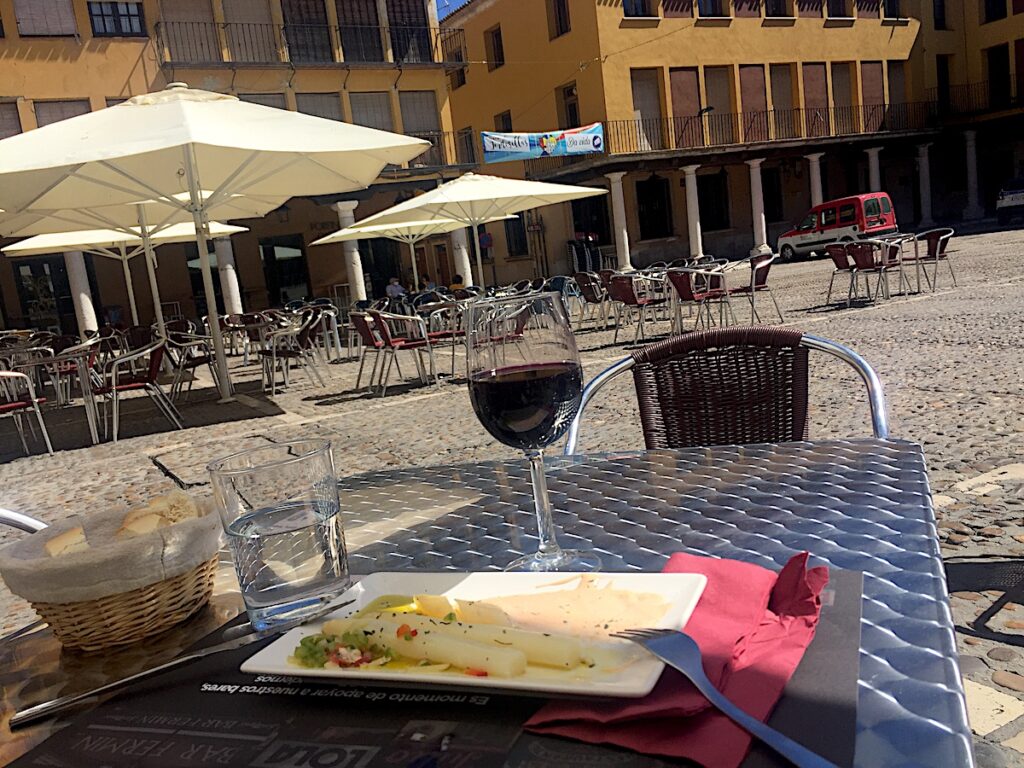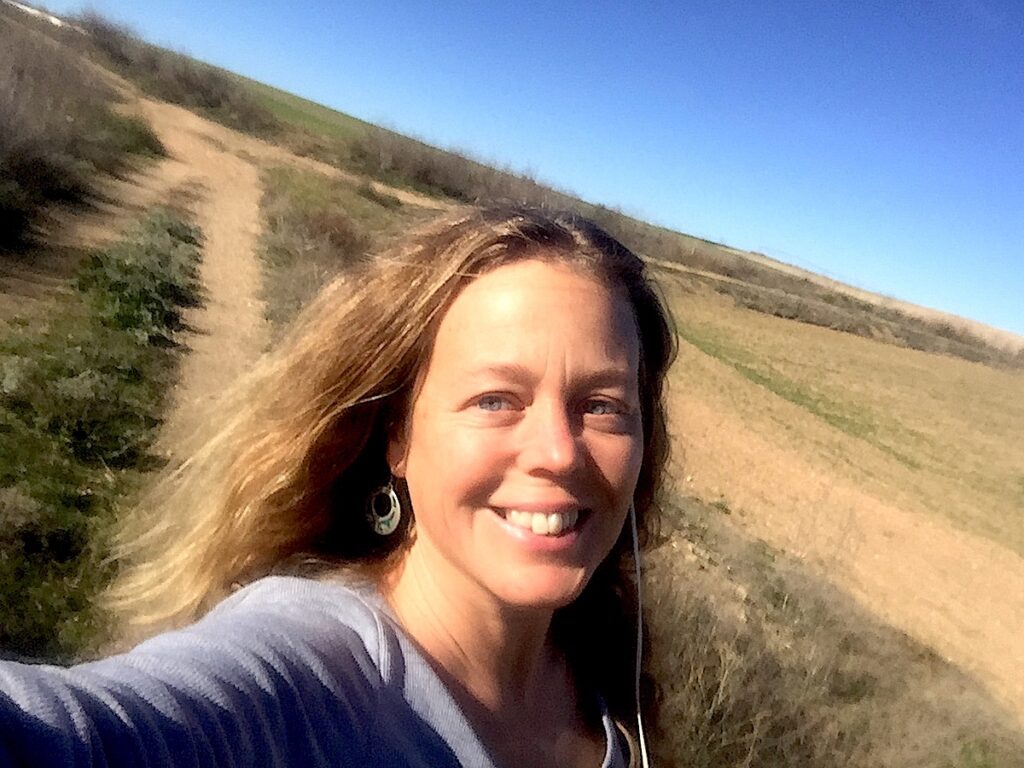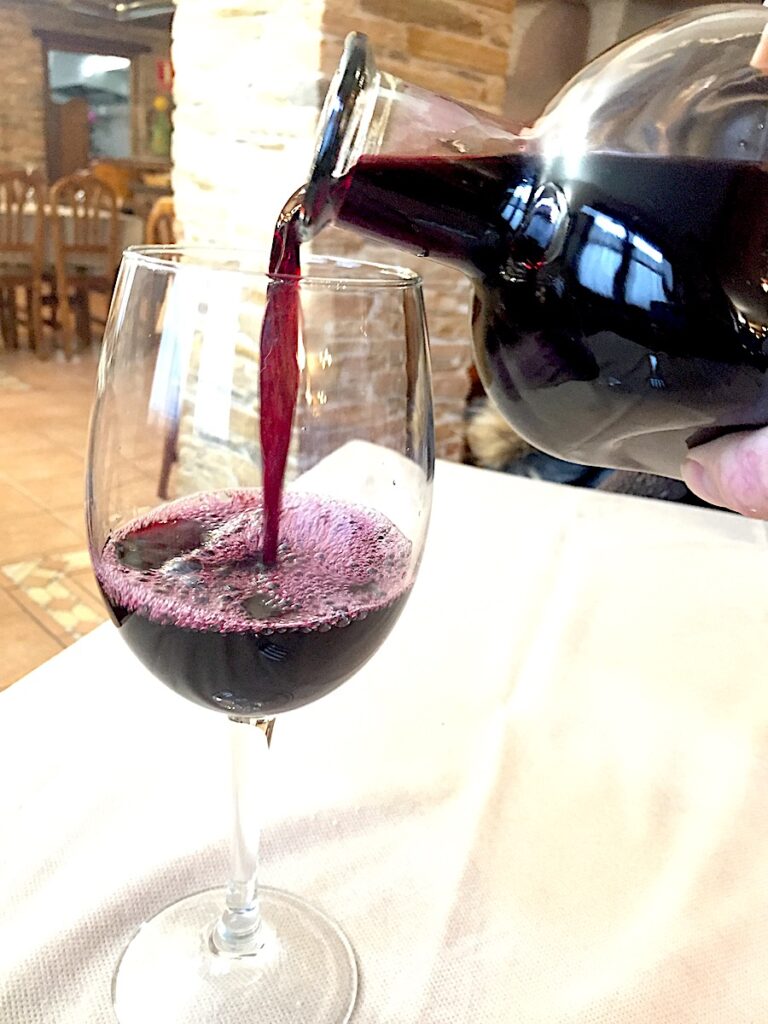Tordesillas, Valladolid
September 14, 2020

I have a new hogar in the small town of Tordesillas where I am teaching this year— yay me! A new home is exciting.

I don’t have many things— necessary or otherwise, so I went with a furnished place and a kitchen with —well, let’s say I’ve got the necessary to boil water and flip a Spanish omelette— I did break down and bought a grater and a spatula. I do wish the place came with more bowls, some stainless steel pans, and perhaps a Kitchen-aid or at least a food processor—oh, and while I’m at it how about a few artesian area rugs to warm the cool tile floors and a coat rack at the front door, and….ok, I could go on but I remind myself that the roots I put down are shallow roots, the roots of an annual plant and not a tree. My wishes for the less than essential and the decorative, for now, will remain visions in my head instead of physical items that I will eventually carry out on my back come May.

I make-due with what I’ve got, and actually, there’s a lot here! Three spacious bedrooms to be exact! The master bedroom which houses the double bed I will eventually claim as my own, however for now, I’ve been sleeping on the couch in the living room… I’m so used to a studio apartment. I’m almost tempted to sleep in the kitchen, that would be more like the one-room living I was doing over the last two years!
The two guest rooms each contain two twin beds and still enough space for a dresser and a chair—- come visit me. Help me perfect the Spanish omelette—I’ll be your hostess at this quaint Bed and Breakfast! — (Sadly, this will probably remain impossible due to Covid—-sigh.)
At the left of the entrance and through a set of French doors is the ample living room, with a fairly cozy couch and two comfy, overstuffed chairs—
time to find a used book store! I’ve set up my orange yoga mat at one end of the room and there is still plenty of space for more yogis to join in! (hint, hint!)

To the right of the entrance way is a nice sized 70’s colored kitchen— mandarin orange and avocado green!
I chuckle at it each time I enter the kitchen—- I’ve been chuckling a lot these last few days!
—-Oh, but I do miss sipping my morning tea, or cooling off with an afternoon beverage on my terrace in Gran Tarajal.


Nothing compares to the amazing views of the expansive ocean and the colorful sky of Fuerteventura—-ahhh, another sigh! —

I must remind myself, I am here now, this is a new place, with different experiences to live, new friendships to forge, and new perspectives to be tried on—Through the tears of goodbyes and the heart tugs over leaving a place where I was starting to extend deeper roots, the excitement of another opportunity is starting to reveal its form. And here it is…
Tordesillas.

I’m living amongst so much history!
As I walk the narrow streets lined with adobe and stone constructions it’s as if I can feel the history pouring out from the cracks and fraying layers of the buildings that once housed figures we read about in history books.

Tordesillas sits atop a hill 701 meters above sea level (about half a mile), the perfect position for a Roman fortress. In 83 a.C Quinto Cecilio Metelo, founded the town and built a tower in honor of Lucero Cornelia Sila a highly regarded Roman nobleman and politician of the time. Some speculate the origin of the modern name of the town comes from the nobleman’s name—-Torre de Sila becomes Tordesillas —The facade of the tower still exists today.
During the medieval period, a wall was constructed around the entire circumference of the town. Today, only the eastern section of the fortress wall remains and only partially intact at that. Though it’s not in its full glory, each time I have walked along that wall I get shivers as I imagine armed sentries of a bygone Roman era carrying torches while guarding the perimeters in the dark of the night.
In the times of the reconquista, (722 – 1492) Tordesillas held a central role as bastion against the infieles, the Nasrid Dynasty of Moors which reigned in Spain during that time and who were eventually expelled from Spain, along with the Jews, in 1492. This is the challenging part of Spanish history but one that also intrigues me more and more as I begin exploring mainland Spain.The town is centrally located and connects the Northeastern regions of Castilla to its center and thus, up until the 19th century, to its monarchs. It holds the distinction of being the place where the treaty that divided the world in two was signed, the Treaty of Tordesillas.
On June 7th of 1494, in order to alleviate the growing tensions between Portugal and Spain at the onset of voyages to lands new to European awareness, el Tratado de Tordesillas was agreed upon and signed by the two kingdoms. This treaty divided the world into two—

one half went to Portugal and the other to Spain. Our contemporary world is still touched, if not greatly influenced by, this 500 year old agreement between two faded empires. The Portuguese claimed Brazil and the rest of South America became predominantly Spanish… it also affected the continent of Africa as new lands were declared “discovered.”

From 1509 – 1555, the palace of Tordesillas held the rightful Queen of Spain, Juana I of Castile, captive.
But it wasn’t a band of rivaling nobles that kept her isolated in a tower never to leave again, no, she was banished there by her very own father! King Fernando the Catholic of Aragon. Later her own son, Carlos I, continued her captivity, as he maintained a de facto rule over the regions of Castilla y Léon and Aragón until her death in 1555.— A story for another day!

Tordesillas, like many towns, was constructed along the river Duero, which today, twisting along most of its 897km (557 miles) of fertile banks, sit a multitude of Ribera del Duero vineyards—

the renowned Spanish wine country, as well as the agricultural bread basket of Spain. (more stories for other days, so much to say!!)
Its bridge is an absolute gorgeous gem of fine stone construction! Its 10 arches expand across the mighty Duero uniting the once prominent town to all the kingdoms of Castilla y Léon. Its style is medieval but there are conflicting opinions about its actual origin date.

In the XV and XVI centuries there was a massive reconstruction of the bridge because the town served as the central hub between the Northeast and the central Meseta. Even today Tordesillas remains a major transit hub with major highway connections making for easy access to most areas of the country. (Lucky me, once travel opens up–ah these days of Covid.)

As I walk around in the late afternoon, under the golden hues of an almost autumn sunlight, I imagine being carried back to a time when the plaza mayor bustled with medieval market activity. When horses were the mode of transportation, when people wore big robes, and when nobles graced the once standing palace with their presence.

The place where the world was “divided in two” by one of the mightiest and most powerful kingdoms the world had previously known—- how times change, power dynamics change, even the Roman Empire fell. It feels as if each will have its chance at rule and it depends greatly on how that power is managed as to its longevity… I wonder if enough is ever learned from past mistakes?
I’m glad I chose the pueblo over the city, it feels more accessible. After two years of living a daily beach life I don’t feel ready for the faced-paced daily grind of the big city. Valladolid is a close 30 minute bus ride from here so, I have the best of both worlds. There is much to see in this town, lots of history, gorgeous architecture and a river to walk along. I am excited to continue wandering through its streets as I internalize place and make it, at least in part, mine.

And with the excitement of the newness of place, the feeling of being a stranger in a strange land also exists. I find myself wondering, “what have I done!” I miss the friends I made in Gran Tarajal— making friends there was NOT an easy feat, it took me the good part of a year and a half before I felt, and then only in part, as an integral member in the community! I miss my friends in Oregon, people who know me, people with whom I can plop-down on their couches and feel like I can be me! I miss my daughter and our sleep-over silliness and our long talks that extend into the night!
I’m starting all over again. It’s Chrysalis time, the wings are forming but not unfolding, not yet.

I invite you to go out, buy a bottle of Ribera del Duero wine, a crianza if you have the choice, and raise your glass to this new adventure!— that’s what I’m going to do.

Spanish words:
Hogar: Home
Reconquista: Iberian Crusades starting in about 722, after the Moorish invasion of the Iberian Peninsula in 711. It ended in 1492 with the fall of Al-Andalus, the last Muslim region of the peninsula, under the rule of the Catholic Kings, Isabella and Ferdinand.
Infieles: In the Middle Ages, the infidels were those who did not follow the Catholic Church i.e., the Muslims and the Jews.
Tratado de Tordesillas: The treaty signed in 1494 in Tordesillas by Spain and Portugal, dividing the world in two, and serving to relieve the mounting tensions between the two regions as the “discovery” of new lands was unfolding.
Ribera del Duero: The banks of the River Douro
Crianza: One of the aging processes for wine. Red wines must be aged 24 months, 6 of those months in oak barrels. A white wine is aged 18 months with 6 months in the cask.
Meseta: Plateau
Plaza Mayor: Main Square



